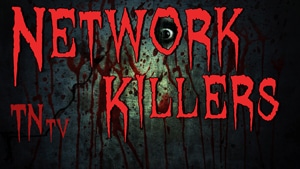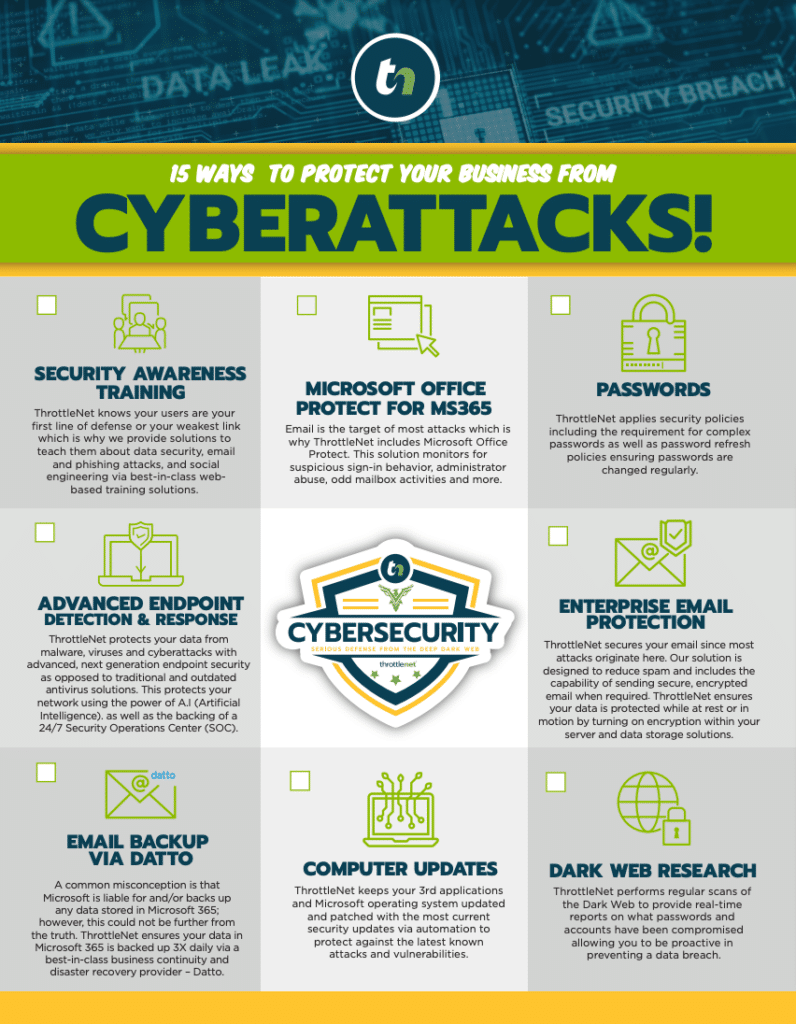Your company’s network is the heartbeat of your operations. When it’s healthy, everything runs smoothly—email flows, servers perform, and your team stays productive. But lurking behind every connection are dangerous network killers waiting for a chance to strike.
From ransomware and human error to outdated systems and weak Wi-Fi, these threats can shut down your business faster than you think. Below are the most frightening “network killers” haunting companies today—and how to protect your organization from them.Are you aware of the three scariest concerns that could bring down your computer network?
Todd Budde, Virtual Chief Information Officer (vCIO) with ThrottleNet appeared on TNtv to discuss the three most harmful scenarios he has seen that can quickly turn your IT network into a total disaster.
The three Network Killers include:
1. The Emergence of CryptoLocker and Ransomware
These major viruses can lock up a user’s files—or even the files of everyone in a company. Business operations can come to a complete standstill.
A CryptoLocker or ransomware attack usually begins when an employee mistakenly opens a malicious email attachment or link. The code silently spreads through mapped network drives, encrypting files and folders one by one.
Worse yet, if other employees are connected to those same drives, their data becomes hostage too. The only way to regain access is by obtaining an encryption key from the attacker—often through a ransom payment.
Until that key is secured (or a cybersecurity firm intervenes), the network becomes completely inoperable.
The best defense?
- Regular, secure off-site backups
- Anti-ransomware protection
- User training on phishing awareness
- A tested incident response plan
2. Untrained Computer Users
Some employees receive little to no computer training and are unaware of the dangers lurking online. They click on every email, open every attachment, and visit questionable websites without thinking twice.
One of the most common examples: an employee receives a “FedEx” or “UPS” shipping confirmation email—even though they didn’t order anything. Inside that attachment? Malware waiting to spread through your network.
Untrained users are one of the most dangerous network killers because they can undo even the best technology investments.
To mitigate this risk:
- Implement regular cybersecurity training
- Conduct phishing simulations
- Encourage a “think before you click” culture
When employees understand the “why” behind cybersecurity, they become your strongest line of defense—not your weakest link.
3. Failing to Have a Strong Backup and Disaster Recovery Plan
Even with great technology and training, mistakes happen. A single infected file can cripple an organization for days or weeks if proper backups aren’t in place.
A robust backup and disaster recovery (BDR) plan ensures your data can be restored quickly with minimal downtime. Version control, off-site replication, and regular testing are critical to recovery success.
Businesses that neglect disaster recovery often discover too late that their backups weren’t current—or that restoration takes days instead of minutes.
A solid BDR strategy isn’t optional; it’s survival.
4. Outdated Hardware and Unsupported Software
One of the sneakiest network killers isn’t a hacker at all—it’s time.
Old hardware and unsupported software create vulnerabilities that attackers love to exploit. When servers or operating systems reach “end of life,” they no longer receive security patches, leaving them wide open to attack.
Running outdated systems also slows productivity, increases maintenance costs, and introduces compatibility issues with modern applications.
Prevent this killer by:
- Following a tech hardware refresh schedule
- Keeping all software updated and patched
- Replacing end-of-life systems before they fail
Aging equipment doesn’t just hurt performance—it endangers your entire network.
5. Weak Wi-Fi Security
Wi-Fi is the lifeblood of business connectivity—but it can also be a doorway for intruders. Weak passwords, open guest networks, and outdated encryption protocols like WPA2 leave wireless networks exposed.
Hackers can intercept traffic, steal credentials, or launch man-in-the-middle attacks from the parking lot.
Modern Wi-Fi networks should:
- Use WPA3 encryption
- Require strong authentication for all devices
- Segregate guest networks from internal systems
- Regularly rotate network passwords
A secure wireless network isn’t just about convenience—it’s a cornerstone of modern cybersecurity.
6. Poor Patch Management
Another silent network killer is neglecting updates. When vendors release security patches, they’re often addressing known vulnerabilities that hackers are already exploiting.
Skipping updates—or delaying them too long—leaves open doors across your network.
To avoid this killer:
- Implement automated patch management tools
- Schedule routine maintenance windows
- Prioritize updates for critical systems and firewalls
A single unpatched system can be all it takes for attackers to infiltrate your network.
7. Shadow IT and Unauthorized Devices
“Shadow IT” refers to employees using unapproved devices, applications, or cloud services without IT’s knowledge. While it often starts with good intentions (for convenience or productivity), it introduces huge security risks.
Personal smartphones, USB drives, and unvetted apps can bypass network protections and leak sensitive data.
ThrottleNet recommends:
- Enforcing endpoint security and mobile device management (MDM)
- Monitoring network access logs for unknown devices
- Creating clear policies about what employees can and cannot connect
The key is awareness. When IT teams don’t know what’s on the network, they can’t protect it.
8. Human Error and Neglected Cyber Hygiene
Even with top-tier tools and policies, human error remains one of the most common network killers. Mistyped configurations, reused passwords, or accidentally sharing sensitive data can all lead to breaches.
Encouraging good cyber hygiene—like strong, unique passwords, regular updates, and secure file sharing—reduces the odds of accidental data loss or exposure.
ThrottleNet also advises regular vulnerability assessments and penetration testing to identify weak spots before hackers do.
When humans make mistakes, technology should catch them—not amplify them.
How to Defend Against Network Killers
The scariest thing about network killers is that they’re always evolving. Yesterday’s threats look different today—and tomorrow’s will be more sophisticated still.
To defend your business:
- Train your people. Security starts with awareness.
- Update your technology. Outdated systems are ticking time bombs.
- Implement layered protection. Firewalls, endpoint detection, and 24/7 monitoring work best together.
- Plan for recovery. Test backups and ensure business continuity.
ThrottleNet’s award-winning Managed IT and cybersecurity services help companies eliminate these network killers before they strike. From ransomware prevention to disaster recovery and endpoint protection, our team provides the proactive defense your business needs.
Don’t Let Network Killers Haunt Your Business
Ransomware. Human error. Outdated hardware. Weak Wi-Fi. Each can silently destroy a company’s productivity and profitability.
But with the right mix of technology, planning, and education, your network doesn’t have to fall victim.
Contact ThrottleNet today at 866-829-5557 or visit www.throttlenet.com to learn how our cybersecurity experts can help your business identify, neutralize, and prevent these scary network killers before they strike.
Because when it comes to your IT, prevention isn’t just smart—it’s survival.




